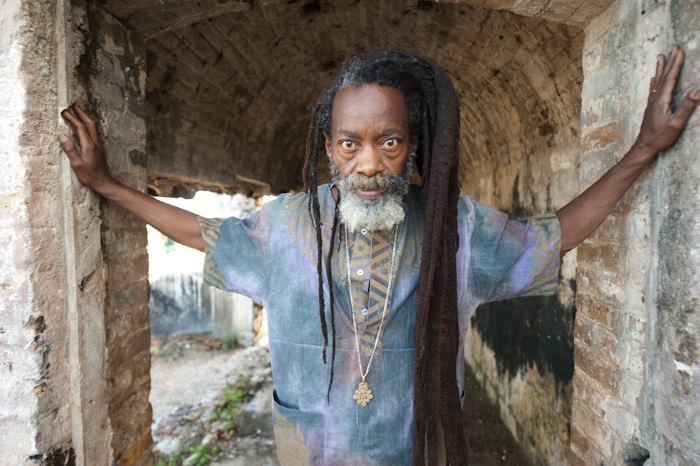Few musicians embody the essence of reggae fairly like Earl “Chinna” Smith. A guitarist of uncommon expertise and deep non secular conviction, Smith has been on the coronary heart of reggae music for over 5 a long time, shaping its sound and guaranteeing its soul endures throughout generations. Whether or not within the studio or his personal Chinna’s Yard, he stays a beacon of authenticity and craftsmanship in Jamaican music.
The Most Recorded Guitarist of Reggae’s Golden Period
Born on 6 August 1955, Earl “Chinna” Smith, also called Earl Flute and Melchizedek the Excessive Priest, has been lively for the reason that late Nineteen Sixties. He’s perhaps the most recorded guitarist of the classic reggae era, showing on greater than 500 albums. Smith performed on seminal works by Bob Marley, Dennis Brown, Bunny Wailer, Sugar Minott, Jacob Miller, Black Uhuru, Mighty Diamonds, Augustus Pablo, Gregory Isaacs, and Freddie McGregor. The complete checklist of his collaborations may fill a whole web page. As a member of Bunny Lee’s Aggrovators and later the Soul Syndicate, Smith influenced a era of Jamaican musicians.
Past his impeccable rhythm and riff taking part in, he launched the innovation of guitar intros in reggae, crafting iconic openings for songs like Marley’s “Rat Race” and Dennis Brown’s “Cassandra”, the place beforehand most tracks started with a drum fill.
The Rise of a Legend
Raised in Kingston, Jamaica, Smith’s musical journey started as a youngster within the early Nineteen Seventies with the legendary Soul Syndicate, a pioneering session band that helped outline the golden period of reggae. The group, based by bassist George Fullwood, performed a vital function within the growth of the style, backing a few of reggae’s most influential artists. Smith’s masterful guitar work shortly made him some of the sought-after musicians on the island.
His résumé reads like a roll name of reggae royalty: Bob Marley, Bunny Wailer, Dennis Brown, Augustus Pablo, Jacob Miller, Jimmy Cliff, The Mighty Diamonds, Ras Michael and the Sons of Negus, Sly and Robbie, and Ziggy Marley and the Melody Makers all benefited from his artistry. But his attain prolonged past reggae’s borders, collaborating with worldwide stars like Alpha Blondy, the Fugees, Lauryn Hill, Joss Stone, and Amy Winehouse.
A Timeless Sound in a Digital Period
Whereas the Nineteen Eighties noticed reggae transition into the digital age, leaving many musicians struggling to adapt, Smith’s artistry remained in excessive demand. Generally known as “Melchizedek” or the “Excessive Priest,” his distinct, roots-heavy guitar model by no means misplaced its relevance. His skill to weave intricate, non secular melodies into any rhythm cemented his place as a pillar of reggae music.
In 1980, Smith launched the Excessive Instances label, additional solidifying his affect on reggae’s evolution. The label turned a platform for preserving the wealthy, natural sounds of roots reggae amidst the rise of digital manufacturing.
Inna De Yard: A Return to Roots
Within the 2000s, Smith spearheaded a motion that introduced reggae again to its acoustic, grassroots origins. His Inna De Yard periods, recorded in his lush St. Andrew yard, revived the apply of unplugged, soulful reggae recordings. Launched beneath the French label Makasound, the Inna De Yard sequence turned a celebration of the style’s uncooked essence, that includes minimalist instrumentation and legendary practitioners. By way of these recordings, Smith nurtured new expertise whereas paying homage to reggae’s foundations, reinforcing his dedication to protecting the music pure and highly effective.
To today, Smith welcomes musicians from far and broad to his yard in Jamaica, the place they collect to study, jam, and protect the custom of roots reggae. He has remained a mentor, instructing youthful generations the intricacies of reggae music and guaranteeing its legacy continues.
Grounded in Rastafari
Regardless of his towering contributions to reggae, Smith stays humble, grounded in his Rastafarian religion. His quiet affect speaks volumes, as he continues to encourage and mentor musicians worldwide. In 2013, he was awarded the celebrated Silver Musgrave Medal by the Institute of Jamaica, an honour recognising his excellent contributions to Jamaican artwork and tradition. Offered by the late Barbara Gloudon, the award cemented his legacy as certainly one of reggae’s most enduring musicians.
A Legacy Nonetheless Unfolding
Even after 5 a long time, Earl “Chinna” Smith stays an lively and important power in reggae music. Whether or not within the studio, on stage, or at Chinna’s Yard, he continues to form the style together with his unmistakable contact. As reggae lovers rejoice Reggae Month, there’s no higher time to honour the Excessive Priest whose music, mentorship, and mission have stored the center of reggae beating sturdy.
Cowl photograph by way of Earl “Chinna” Smith on Facebook


